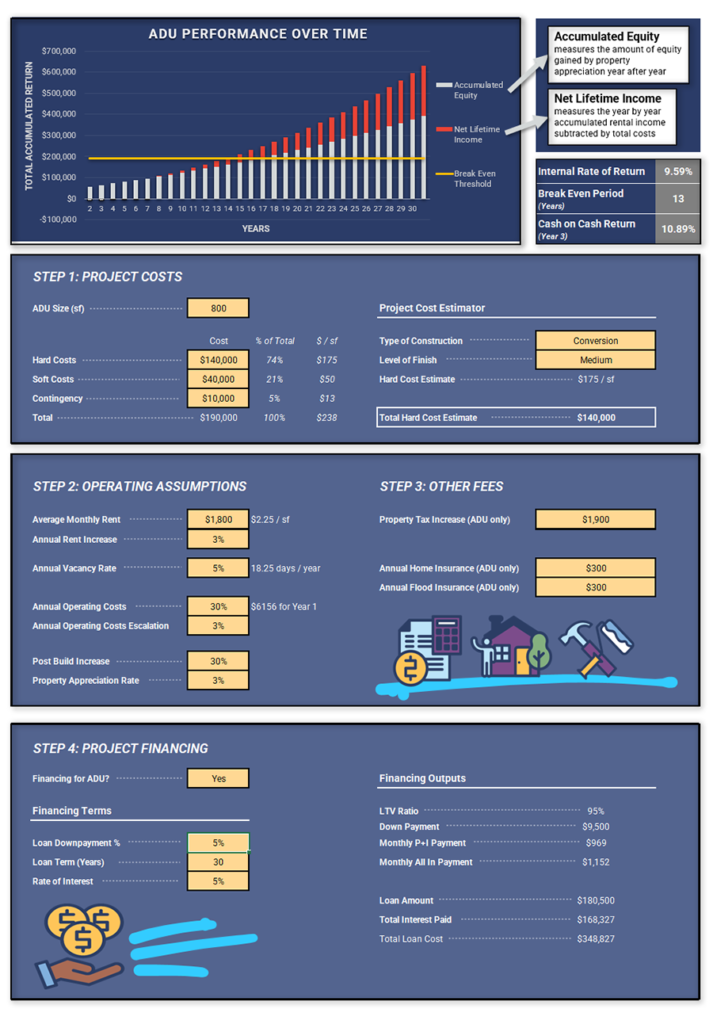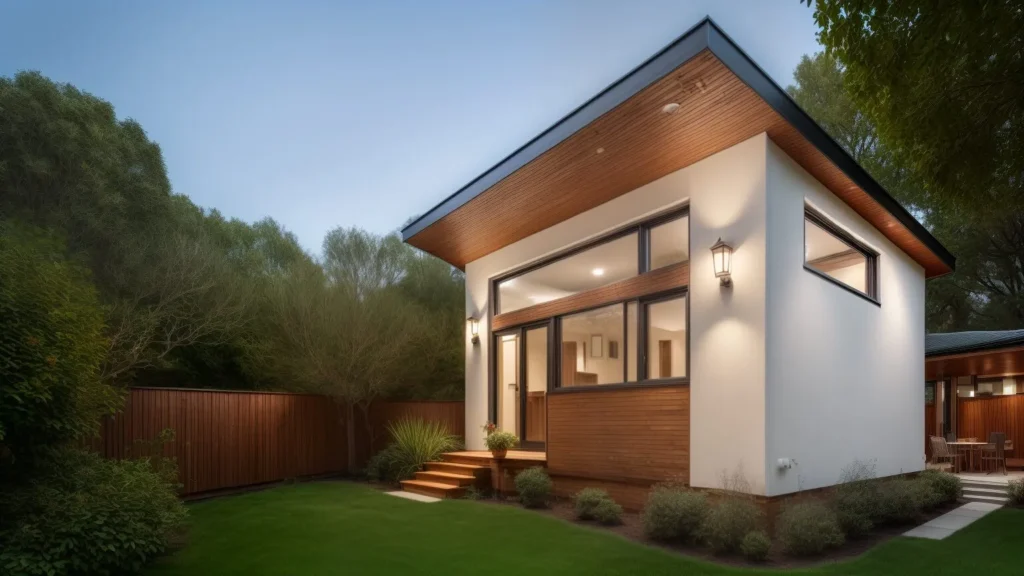An Accessory Dwelling Unit (ADU) is a secondary residential unit built on the same lot as a primary home. In Sacramento, ADUs can be either attached—sharing at least one wall with the main residence—or detached as a standalone structure. These units are fully functional living spaces, complete with permanent facilities for sleeping, cooking, eating, sanitation, and day-to-day living.
Sacramento ADU Size Limits and Building Codes
According to the City of Sacramento Community Development Department, the following guidelines apply:
- Maximum ADU size: 1,200 square feet per lot or parcel
- Attached ADUs: Up to 50% of the primary home’s size or 850 sq ft, whichever is greater
- Attached ADUs with 2+ bedrooms: Up to 50% of the main residence or 1,000 sq ft, whichever is greater
All ADUs must follow current California Building Code (CBC) requirements, including:
- California Residential Code (CRC)
- California Energy Code (CEnC)
- Plumbing (CPC), Mechanical (CMC), and Electrical Codes (CEC)
- Local planning and zoning ordinances
Before submitting a building permit, you must obtain planning approval or request a concurrent review through a Memorandum of Understanding, which must be approved by senior planning staff.
ADU Construction Costs in Sacramento
Costs for ADUs vary depending on the type (detached, attached, modular, etc.) and construction method. Here’s a general breakdown:
- 80% of the total budget typically goes toward construction (labor and materials)
- 20% is generally allocated to design, consulting, and permitting fees
- Longer construction timelines may result in higher overall project costs
ADU Investment Benefits: ROI and Long-Term Value
Building an ADU isn’t just about adding space—it’s a smart investment. Over time, homeowners can benefit from:
- Return on Investment (ROI) through rental income
- Increased property value and accumulated equity
- Net lifetime income from long-term tenants or short-term rentals

